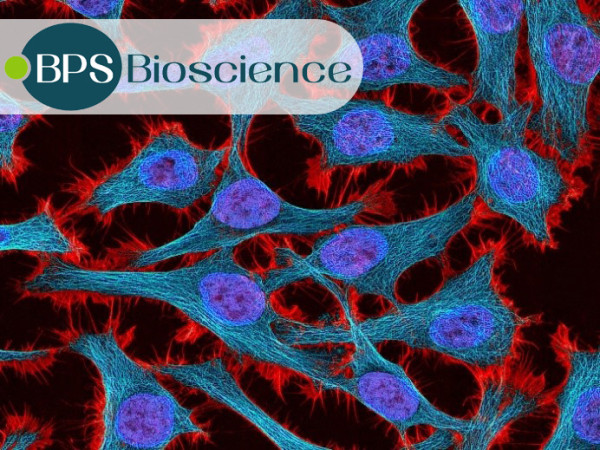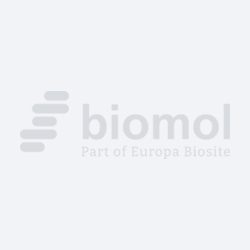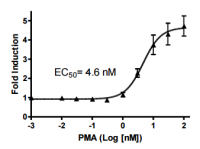Written by Emily Locke
With her book “The Immortal Life of Henrietta Lacks”, author Rebecca Skloot achieved a global bestseller in 2011 [1]. In this book, Skloot tells the story of African American woman Henrietta Lacks, who suffered from severe, irregular vaginal bleeding after the birth of her fifth child. She sought treatment at the Johns Hopkins Hospital in Baltimore, where an examination led to a diagnosis of cervical carcinoma, specifically squamous cell carcinoma. She then underwent internal and external radiation treatments. During one of these sessions, Lacks’s gynecologist took tissue samples from her cervix without informing or obtaining consent from the patient and handed them over to physician George Otto Gey. Gey was working on the development of an immortal cell line, a goal he ultimately achieved with Henrietta Lacks’s cells [2]. These cells became the first human cells to continuously divide outside the body—a medical breakthrough in 1951 [1]. To anonymize the donor, Gey named the cell line after her initials, "HeLa."
To this day, enormous quantities of HeLa cells have been produced. Although other human cell lines are now available, HeLa remains an indispensable staple for every biotech company. Globally, there are more than 17,000 patents and 60,000 scientific publications based on HeLa cell cultures. These include significant medical advancements, such as the development of the polio vaccine, breast cancer treatments, and medications for Parkinson’s disease and leukemia [1]. To date, four Nobel Prizes have been awarded for research based on HeLa cells [2]. Despite these achievements, Henrietta Lacks herself never learned of the far-reaching success of HeLa cells, as she passed away on October 4, 1951, at the age of only 31. Her family also did not benefit from the scientific use and commercial marketing of HeLa cells—while companies worldwide earned millions of U.S. dollars from the sale of these cells, Lacks’s descendants lived in poverty and often could not afford health insurance premiums [1].
Despite the legal and ethical controversies surrounding HeLa cells, their impact on medical research remains undisputed. Today, there are several thousand cell lines derived from various animal and plant species, which are widely used in biological and medical research as well as in the development and production of drugs and therapies. Read more about the background and applications of cell lines in this article. Discover the benefits of luciferase reporter cell lines and knockout cell lines, and learn how our partner BPS Bioscience can support your research with high-quality cell lines and customized media.
These topics await you:
1) Cells and Immortality: Immortalized Cell Lines in Research
2) Highlight Cell Lines from BPS Bioscience
3) Light On! – Luciferase Reporter Cell Lines from BPS Bioscience
4) Genes put out of Action! – Knockout Cell Lines from BPS Bioscience
5) Must-Have Accessories! – Cell Media for Every Step in the Cell Culture Workflow
Subscribe to the free Biomol Newsletter and never miss a Blog Article again!
Cells and Immortality: Immortalized Cell Lines in Research
What exactly is a cell line? According to the definition in the Duden, the term refers to cells or a type of tissue that can reproduce indefinitely in cell culture [3]. These cells are immortalized as they lack a Hayflick limit. The Hayflick limit describes the number of cell divisions a cell can undergo before programmed cell death (apoptosis) occurs, triggered when telomeres reach a critical length [4]. The oldest method for generating immortalized cell lines is the isolation of cells from tumor tissue (as with the aforementioned HeLa cells). Additionally, the capacity for cell division can also be maintained through targeted modifications in cells. Immortalization introduces immortalizing genes or proteins into the cell via transfection or through the use of certain viruses, such as the Epstein-Barr virus. Another common method for creating immortalized cell lines is the hybridoma technique, where normal cells are fused with tumor cells to produce immortal cell lines [5].
Today, researchers have access to thousands of different cell lines. In addition to HeLa cells, some of the most well-known include CHO cells (Chinese hamster ovary), HEK293T cells (human embryonic kidney), and Jurkat cells. Beyond these “classics,” there are now numerous modified cell lines that contain specific reporter constructs or have certain proteins selectively knocked out or stably overexpressed. These cell lines provide valuable tools for studying protein interactions, gene activation, cellular signaling, viral infections, cell-to-cell communication, and other biological processes [6]. Compared to biochemical cell-free assays, cell lines serve as more suitable model systems for understanding complex mechanisms within an intact, more natural cellular context.
Our partner BPS Bioscience offers a portfolio of over 250 stable cell lines applied across numerous research fields — including immunotherapy, CAR-T cell therapy, cell signaling, metabolism, neuroscience, and many others. Each of these cell lines undergoes comprehensive validation to ensure reproducible results, reducing the end user’s need for optimization and troubleshooting. The validated cell lines come with detailed protocols, including instructions on cell culture and maintenance, as well as examples of experimental setups [6].
BPS Bioscience's cell lines have proven to be particularly high-performing in 2024. Here are the top 20 cell lines of the year, delivering outstanding results across various fields such as immunotherapy and cell signaling:
Are you uncertain and want to test the cell lines first? For researchers new to BPS Bioscience or working with limited budgets, the Cell Line Rental Program offers a cost-effective solution: the option to rent cell lines at half price. For more information, see:
- Learn more about renting cell lines at BPS Bioscience
- Insights from Suzan Oberle on BPS and the innovative Cell Line Rental Program
Light On! – Luciferase Reporter Cell Lines from BPS Bioscience
In research, it is often crucial to monitor gene expression or the activity of specific promoters. For this, so-called reporter genes are used, which are introduced after the gene or promoter of interest [7]. BPS Bioscience utilizes the well-established luciferase reporter system for many of its cell lines (Fig. 1). In BPS’s luciferase reporter cell lines, the Firefly luciferase gene is linked to a specific response element for a particular signaling pathway. When an appropriate ligand binds to the response element, it triggers the transcription of luciferase RNA, which is then translated into the functional protein. The added substrate, luciferin, is then converted by the Firefly luciferase into oxyluciferin, producing bioluminescence (Fig. 1). The amount of light generated is directly proportional to the expression of Firefly luciferase and can be precisely quantified using a luminometer [6].

Figure 1: Bioluminescent reaction by Firefly luciferase. In the bioluminescent Firefly luciferase reaction, the cells are lysed with a luciferase substrate containing D-luciferin. The Firefly luciferase expressed in the reporter cells then catalyzes the conversion of D-luciferin to oxyluciferin. This process occurs with the use of ATP as a co-substrate and in the presence of Mg²⁺. The amount of light produced is proportional to the amount of luciferase present and can be precisely quantified using a luminometer [8].
To quantify luciferase signals, BPS Bioscience provides practical and efficient ONE-Step™ and TWO-Step Luciferase Assay Systems (Fig. 2). The ONE-Step™ Luciferase Assay System is specifically designed for the sensitive measurement of Firefly luciferase activity in mammalian cell cultures. The TWO-Step Luciferase Assay System, on the other hand, allows for the simultaneous and rapid quantification of both Firefly and Renilla luciferase, enhancing signal accuracy in experiments that use Renilla as a normalization control [9, 10]. Both systems offer high sensitivity and stability and are compatible with various media containing 0-10% serum and phenol red. With a simple, homogeneous protocol requiring only a few steps, these systems are ideal for high-throughput screening [9].

Figure 2: BPS Bioscience's ONE-Step™ and TWO-Step Luciferase Assay Systems. BPS Bioscience's ONE-Step™ Luciferase Assay System enables efficient high-throughput quantification of Firefly luciferase activity in mammalian cell cultures. It consists of two components: a luciferase buffer (Component A) and a luciferase substrate (Component B). Both components are combined into a master mix that contains all the necessary reagents for cell lysis and quantification of luciferase activity. After adding the master mix to the cell culture medium, the generated signal can easily be measured using a luminometer. The TWO-Step Assay System, in addition to the Firefly luciferase reagent, also includes a Renilla luciferase reagent, which is added to the cell culture medium as well. Normalizing to Renilla luciferase as a control reporter enhances the accuracy of the Firefly luciferase measurement, optimizing the results [9].
In this video, you can learn more about the application of BPS Bioscience's Luciferase Reporter Cell Lines in high-throughput screenings:
Using Luciferase Reporter Cell Lines for High Throughput Screening Readouts
Additionally, here you will find a product table with a selection of Luciferase Reporter Cell Lines and Luciferase Assay Systems from BPS Bioscience, designed to assist you in choosing the right tools for your research.
| Luciferase Reporter Cell Lines (selection) and Assay Systems from BPS Bioscience | |
| One-Step Luciferase Assay System | BPS-60690 |
| TWO-Step Luciferase (Firefly & Renilla) Assay System | BPS-60683 |
| CRE/CREB Luciferase Reporter CHO Cell Line (cAMP/PKA Signaling Pathway) | BPS-78568 |
| NFAT Luciferase Reporter CHO Cell Line (PKC/Ca2+ Signaling Pathway) | BPS-78569 |
| NF-kappaB Luciferase Reporter A549 Cell Line | BPS-60625 |
| CD160/NFAT - Luciferase Reporter - Jurkat Recombinant Cell Line | BPS-79594 |
| GR-GAL4 Luciferase Reporter Jurkat Cell Line | BPS-78525 |
Genes put out of Action! – Knockout Cell Lines from BPS Bioscience
Knockout cell lines are among the most powerful tools for testing the specificity of drug candidates or validating the biological function of therapeutic targets. In this technique, a gene is completely knocked out through targeted gene editing, thereby preventing the production of specific target proteins. Modern genome-editing technologies such as CRISPR/Cas9 have made the generation of genetically modified cells faster and more efficient, leading to broader application of these models across various research fields.
Using CRISPR technology, BPS Bioscience has developed a comprehensive selection of knockout cell lines where one or more target proteins are completely knocked out [11]. Some of the knockout target proteins include CD19, CD36, CIITA, CD64, CD32A, PARP, and PARG. Additionally, BPS offers specialized T-cell receptor (TCR) knockout cell lines, which are used in immunotherapy research to specifically integrate TCR molecules. Some of these knockout cell lines are also equipped with a conditional NFAT-luciferase reporter, enabling precise monitoring of gene activation. NFAT (nuclear factor of activated T cells) is a family of transcription factors activated by TCR stimulation, playing a central role in immune responses by inducing the expression of cytokines such as interleukin-2 and TNFα in T cells [12].
| Knockout Cell Lines from BPS Bioscience (selection) | |
| B2M Knockout NFAT Luciferase Reporter Jurkat Cell Line | BPS-78363 |
| B2M/CIITA Double Knockout THP-1 Cell Line | BPS-78391 |
| PARP1 Knockout HeLa Cell Line | BPS-82169 |
| PARG Knockout MCF7 Cell line | BPS-82700 |
| Nectin-4 Knockout MCF7 Cell line | BPS-82656 |
Must-Have Accessories! – Cell Media for Every Step in the Cell Culture Workflow
Just like all living organisms, cells require essential nutrients, specific growth factors, and optimal environmental conditions to support and maintain their growth and activity [9]. Replicating the natural conditions of living organisms allows researchers to study cell behavior, physiology, and biochemistry in a controlled in vitro environment. For reproducible and reliable experimental results, optimized cell media are essential. They must be precisely tailored to the specific cell line and intended application.
BPS Bioscience offers a comprehensive range of ready-to-use cell media that guide you through every step of your cell culture workflow (Fig. 3). These products are specifically optimized for the various cell lines and cell-based assays of our partner. This includes Thaw Media, developed for the recovery of cells after thawing, as well as Growth Media, which contain specific antibiotics to stabilize cell lines over many passages. Assay Media is also available to enhance performance and signal induction in reporter assay systems. For many cell lines, Thaw Media can also be used as Assay Media. The portfolio is rounded out by Cell Freezing Media, which ensures high cell viability and rapid recovery during cryopreservation of all cell lines [9].

Figure 3: Media solutions from BPS Bioscience for every step in the cell culture workflow. BPS Bioscience offers a broad range of cell culture media optimized for thawing, growth, assaying, and freezing of cells [9].
Immunologists can also find the right "accessories" for their immune cells at BPS Bioscience: Our partner offers cell media for research on primary T and NK cells, which not only maintain cell function but also enable effective cell expansion. BPS Bioscience provides media for routine primary cell culture and expansion, specifically tested for use with CAR-T and CAR-NK cells. Additionally, serum-free media are available, which eliminate fluctuations in human or bovine serum and offer greater cell culture consistency through controlled components [9].
All Cell Culture Media from BPS Bioscience
Today, cell culture is an indispensable part of almost every research laboratory. Whether it is reporter, overexpression, knockout, co-stimulatory, iPSC-derived, or Cas9-expressing cell lines – our partner BPS Bioscience is the specialist in cell culture, offering not only over 250 high-quality cell lines of all types but also all the necessary supplementary components required for working with these cell lines.
Read more!
In order to evaluate drug candidates, researchers need a clear understanding of the activity of the molecules of interest at a cellular level. Biochemical assays and binding kinetics can provide molecular dynamics, but intact cellular assays are the requisite next level to clearly realize how drug candidates exert effects in the context of the cell. The 200+ cell lines, primary cells, iPSC-derived cells, and cell-based assay kits by our partner BPS Bioscience provide robust cellular systems for testing and verification. These cell products are complemented by the company's media reagents, including thaw, growth, assay, and freezing media optimized to each cell type, which together with their convenient luciferase detection systems, yield complete cell systems for research.
Sources
[1] https://www.aerzteblatt.de/archiv/79517/Geschichte-der-Medizin-Die-unsterblichen-Zellen-der-Henrietta-Lacks, 02.11.2024
[2] https://de.wikipedia.org/wiki/HeLa-Zellen, 02.11.2024
[3] https://www.duden.de/rechtschreibung/Zelllinie, 02.11.2024
[4] https://de.wikipedia.org/wiki/Hayflick-Grenze, 02.11.2024
[5] https://de.wikipedia.org/wiki/Zelllinie, 02.11.2024
[6] https://bpsbioscience.com/cell-lines, 02.11.2024
[7] https://de.wikipedia.org/wiki/Reportergen, 02.11.2024
[8] https://bpsbioscience.com/one-step-luciferase-assay-system-60690, 02.11.2024
[9] https://bpsbioscience.com/media-and-reagents, 02.11.2024
[10] https://bpsbioscience.com/two-step-luciferase-firefly-renilla-assay-system-60683, 02.11.2024
[11] https://bpsbioscience.com/catalog/category/view/s/knockout-cell-lines/id/3192/, 02.11.2024
[12] https://bpsbioscience.com/b2m-knockout-nfat-luciferase-reporter-jurkat-cell-line-78363, 02.11.2024
Preview Image: https://commons.wikimedia.org/wiki/File:HeLa-II.jpg











